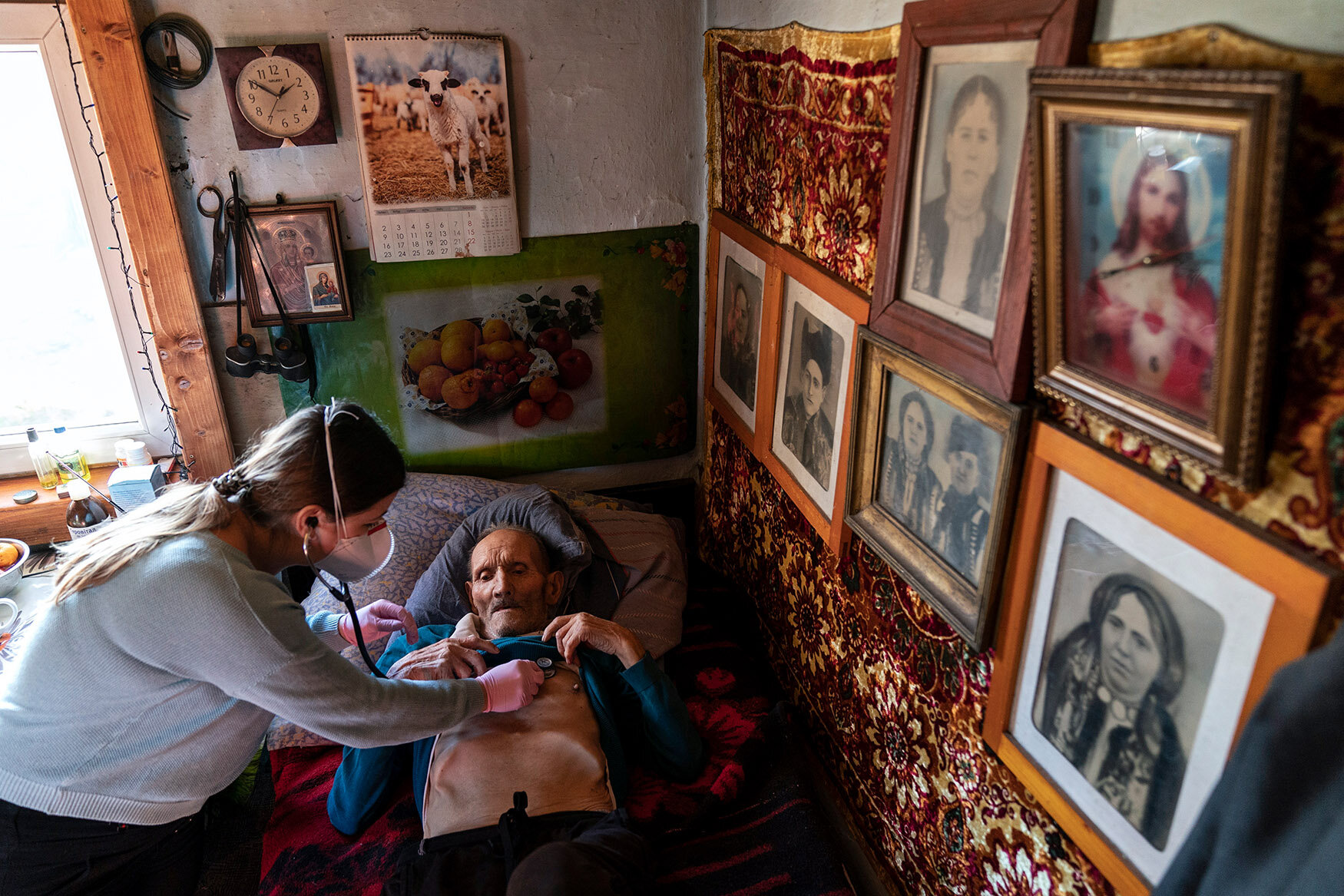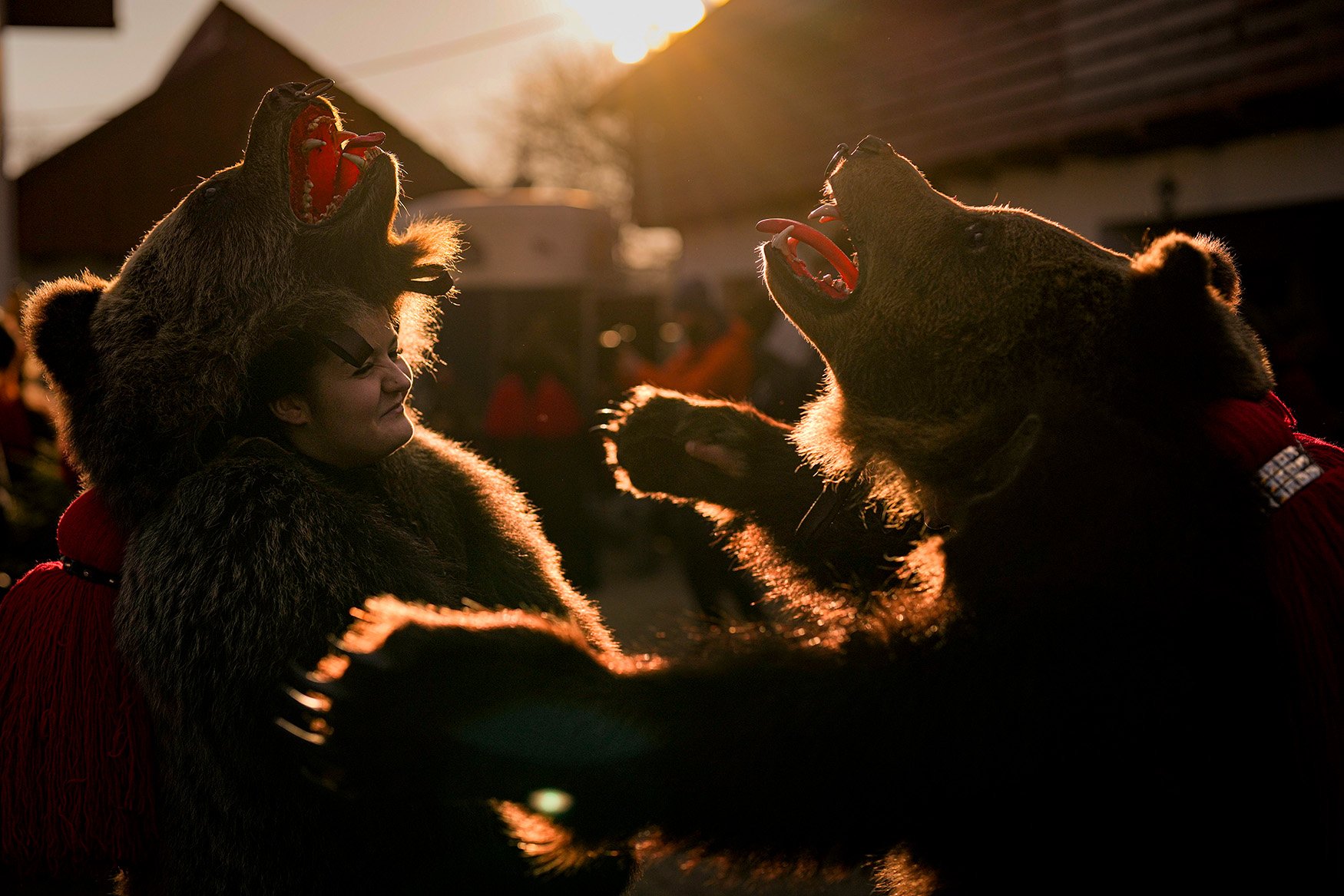Ukrainians observe pagan-rooted new year festival

Dressed as goats, bears, oxen and cranes, many Ukrainians ring in the new year in the colorful rituals of the Malanka holiday.
Malanka, which draws on pagan folk tales, marks the new year according to the Julian calendar, meaning it falls on Jan. 13-14.
In the festivities, celebrants go from house to house, where the dwellers offer them food. According to tradition, a household should have 12 dishes on offer — one for each month of the year. Pancakes, pies and cheese dumplings are common dishes for the holiday.
The celebrations stem from a pagan myth about Malanka, a daughter of the Slavic deity Lada, who was once kidnapped by an evil snake and locked up in the underworld before being rescued.
One of the most famous rituals is the driving of a man dressed as a goat, symbolizing a dying and resurrecting deity. In some areas, homeowners will burn straw and a didukh — a decoration made from a sheaf of wheat — to symbolize the death of everything bad.
Participants, dressed in traditional costumes, take a break while celebrating the Malanka festival in the village of Krasnoilsk, Ukraine, Friday, Jan. 14, 2022. (AP Photo/Ethan Swope)
Participants, dressed in traditional costumes, eat and drink while celebrating the Malanka festival in the village of Krasnoilsk, Ukraine, Friday, Jan. 14, 2022. (AP Photo/Ethan Swope)
Ivan Perchek dresses in a traditional bear costume ahead of the Malanka festival in the village of Krasnoilsk, Ukraine, Wednesday, Jan. 12, 2022. AP Photo/Ethan Swope)
Children are handed money as a gift while celebrating the Malanka festival in the village of Krasnoilsk, Ukraine, Thursday, Jan. 13, 2022. (AP Photo/Ethan Swope)
A villager, dressed in a traditional bear costume, celebrates the Malanka festival in the village of Krasnoilsk, Ukraine, Friday, Jan. 14, 2022. (AP Photo/Ethan Swope)
Villagers decorate bear costumes in preparation for the Malanka festival in the village of Krasnoilsk, Ukraine, Wednesday, Jan. 12, 2022. (AP Photo/Ethan Swope)
A participant, dressed in a traditional costume, leans on a windowsill while celebrating the Malanka festival in the village of Krasnoilsk, Ukraine, Friday, Jan. 14, 2022. (AP Photo/Ethan Swope)
Villagers, dressed as soldiers, guard a check point during Malanka celebrations near the village of Krasnoilsk, Ukraine, Thursday, Jan. 13, 2022. (AP Photo/Ethan Swope)
A girl, dressed in a traditional costume, reacts after being handed money as a gift while celebrating the Malanka festival in the village of Krasnoilsk, Ukraine, Thursday, Jan. 13, 2022. (AP Photo/Ethan Swope)
Children dressed in bear costumes, pose for a photo while celebrating the Malanka festival in the village of Krasnoilsk, Ukraine, Friday, Jan. 14, 2022. (AP Photo/Ethan Swope)
Participants dressed in traditional costumes, celebrate the Malanka festival in the village of Krasnoilsk, Ukraine, Friday, Jan. 14, 2022. (AP Photo/Ethan Swope)
An aerial view of villagers parading the street while celebrating the Malanka festival in the village of Krasnoilsk, Ukraine, Thursday, Jan. 14, 2022. (AP Photo/Ethan Swope)
Villagers dressed in traditional costumes, rest , eat and drink while celebrating the Malanka festival in the village of Krasnoilsk, Ukraine, Friday, Jan. 14, 2022. (AP Photo/Ethan Swope)
Traditional costume masks used to celebrate the Malanka festival are placed on a fence in the village of Krasnoilsk, Ukraine, Friday, Jan. 14, 2022. (AP Photo/Ethan Swope)
A villager, dressed in a traditional bear costume, celebrates the Malanka festival in the village of Krasnoilsk, Ukraine, Friday, Jan. 14, 2022. (AP Photo/Ethan Swope)
Text from AP News story, AP PHOTOS: Ukrainians observe pagan-rooted new year festival, by Ethan Swope
Photos by Ethan Swope






